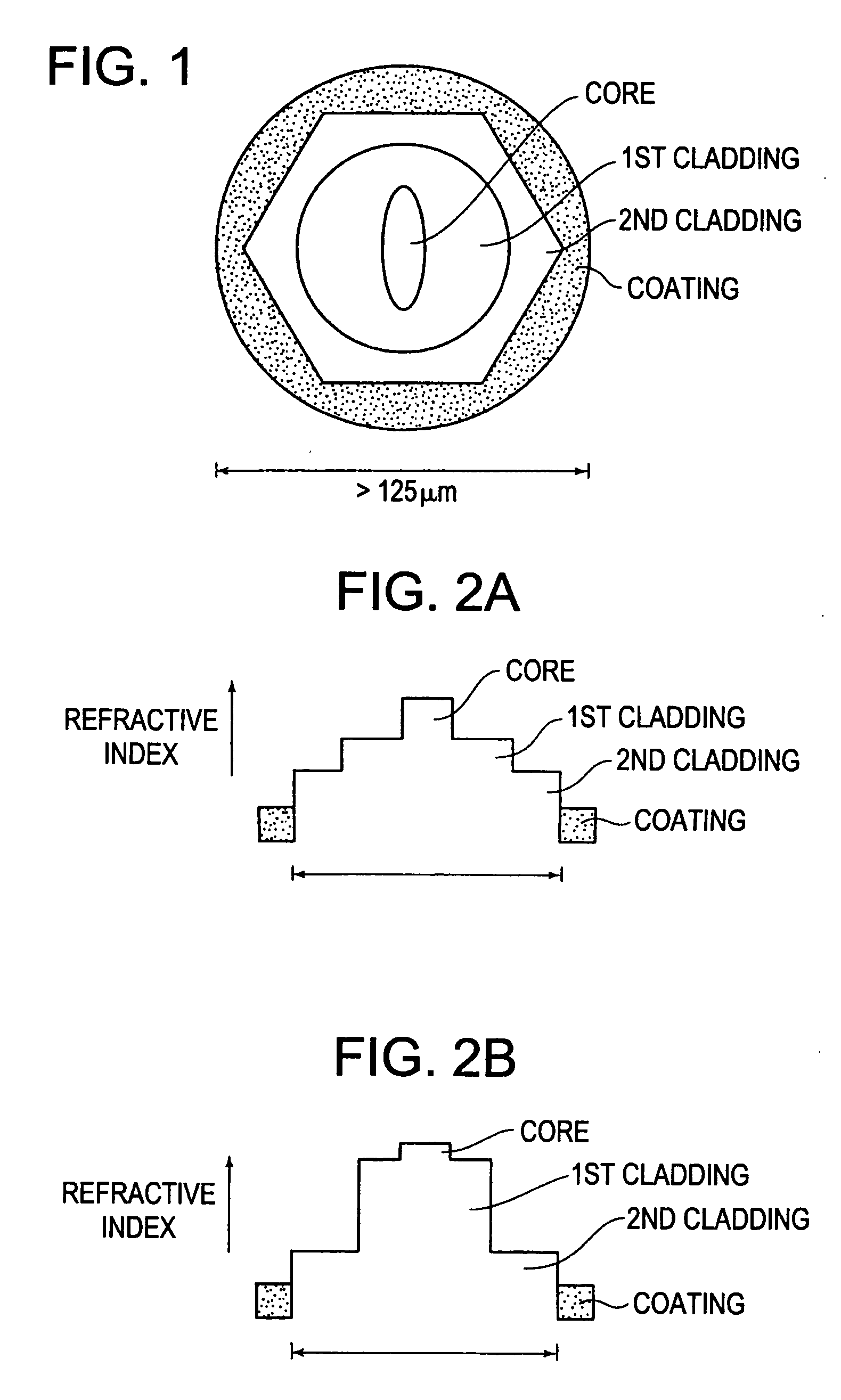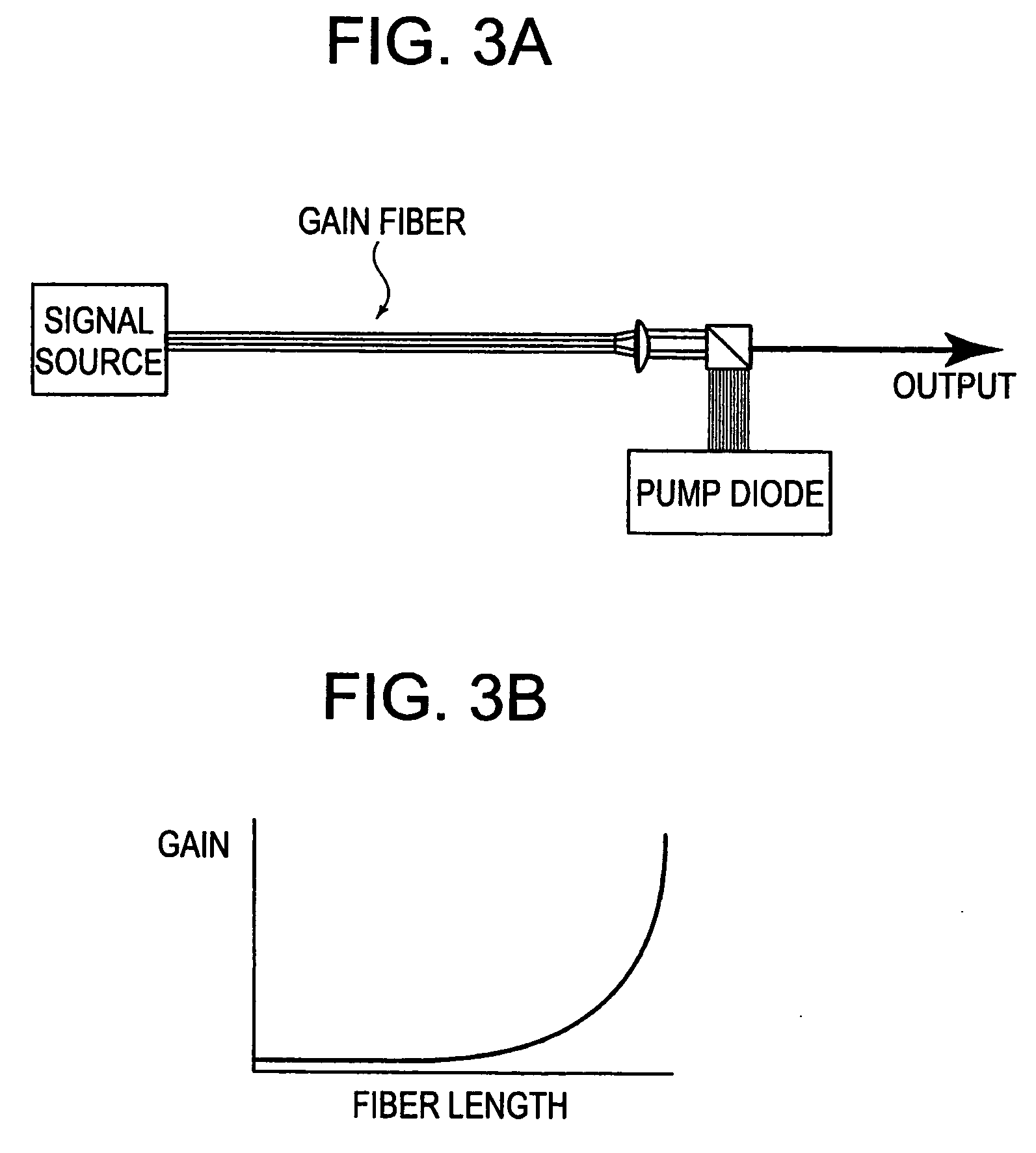Single-polarization high power fiber lasers and amplifiers
a single-polarization, high-power fiber technology, applied in the direction of optical fibers with polarization, cladded optical fibres, optical waveguide light guides, etc., can solve the problem of large gain produced in a short section of fibers with high pump absorption, and achieve the effect of increasing power, increasing self-phase modulation, and stable pulses
- Summary
- Abstract
- Description
- Claims
- Application Information
AI Technical Summary
Benefits of technology
Problems solved by technology
Method used
Image
Examples
Embodiment Construction
[0067] A schematic drawing of a polarization maintaining large-diameter fiber is shown in FIG. 1. The fiber core has an elliptical shape in order to define the polarization axes of the fiber. The fiber comprises a circular (or non-uniform) inner 1st cladding and a non-uniform (or circular) outside 2nd cladding. Here, the parentheses indicate that the locations of the circular and non-uniform claddings can be reversed. The refractive index of the 2nd cladding is lower than the refractive index of the 1st cladding. In principle any cladding shape can be used for the non-uniform cladding, whether the non-uniform cladding is the 1st or the 2nd cladding. The 1st cladding can consist of germania-doped silica, whereas the 2nd cladding can consist of fluoride glass to obtain a maximum refractive index difference, though any glass compositions with appropriate refractive index differences can be used.
[0068] The fiber can be produced by starting out with a circular perform, which is then mac...
PUM
| Property | Measurement | Unit |
|---|---|---|
| life-time | aaaaa | aaaaa |
| powers | aaaaa | aaaaa |
| inner diameter | aaaaa | aaaaa |
Abstract
Description
Claims
Application Information
 Login to View More
Login to View More - R&D
- Intellectual Property
- Life Sciences
- Materials
- Tech Scout
- Unparalleled Data Quality
- Higher Quality Content
- 60% Fewer Hallucinations
Browse by: Latest US Patents, China's latest patents, Technical Efficacy Thesaurus, Application Domain, Technology Topic, Popular Technical Reports.
© 2025 PatSnap. All rights reserved.Legal|Privacy policy|Modern Slavery Act Transparency Statement|Sitemap|About US| Contact US: help@patsnap.com



